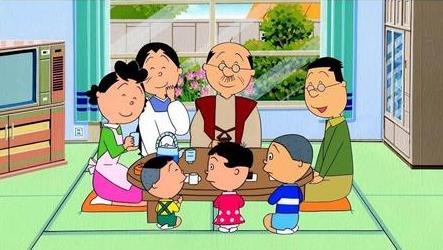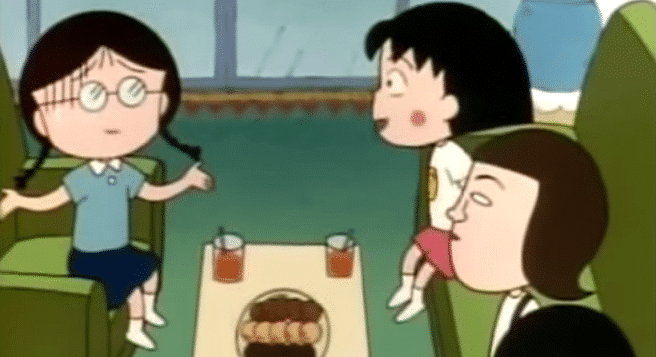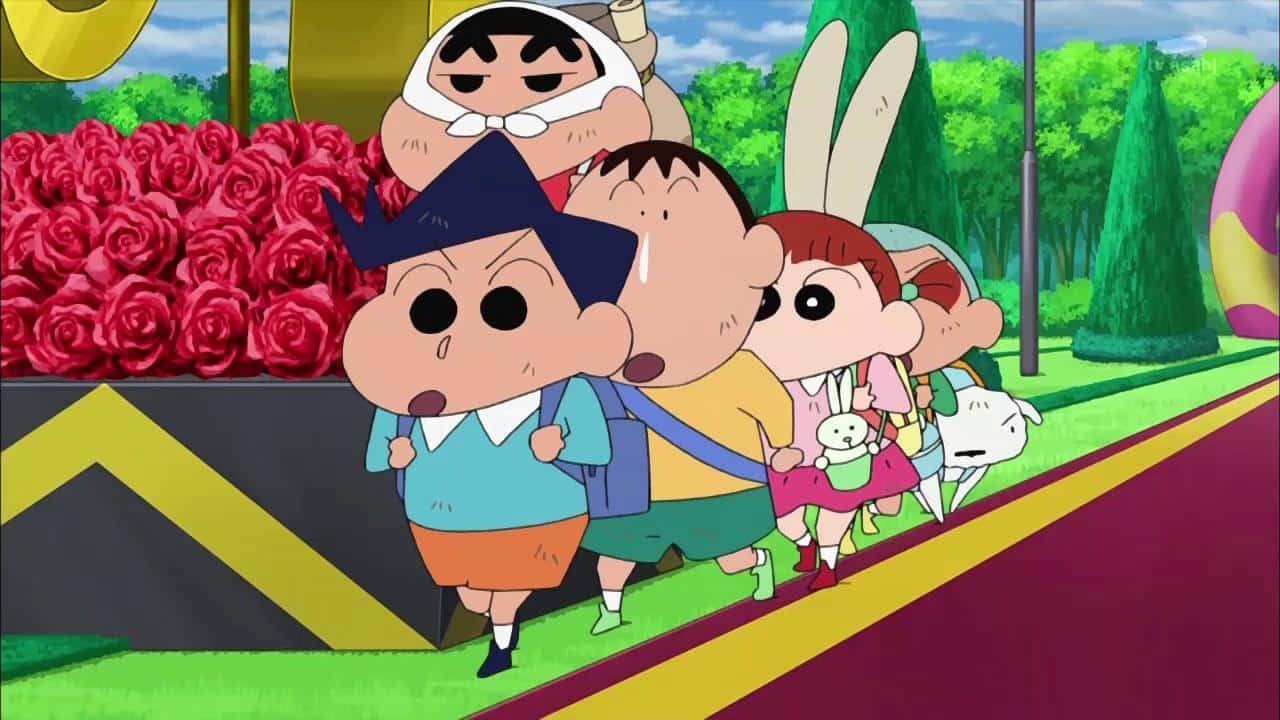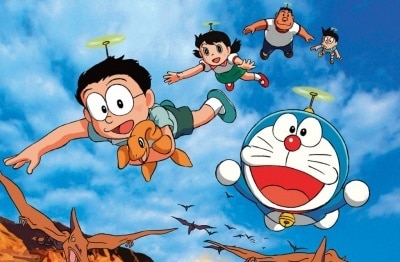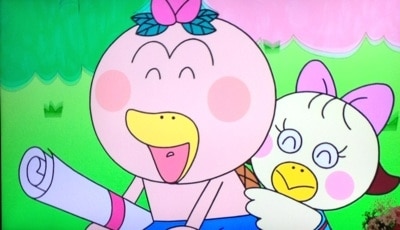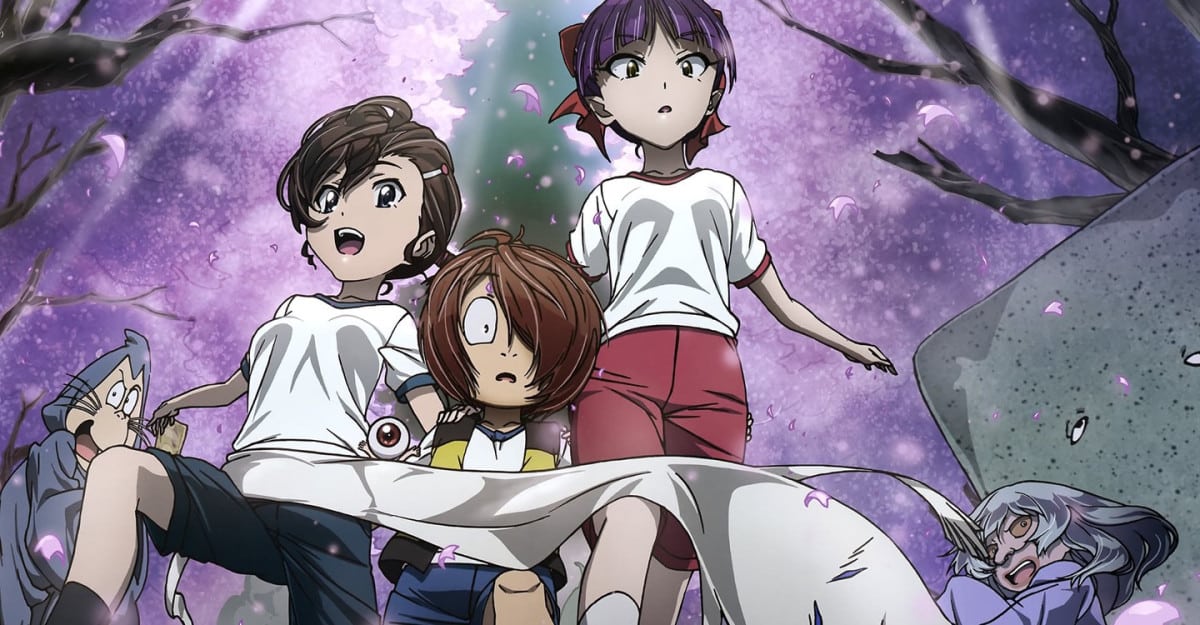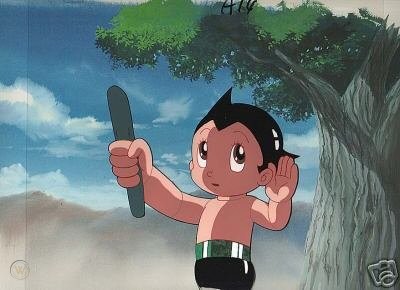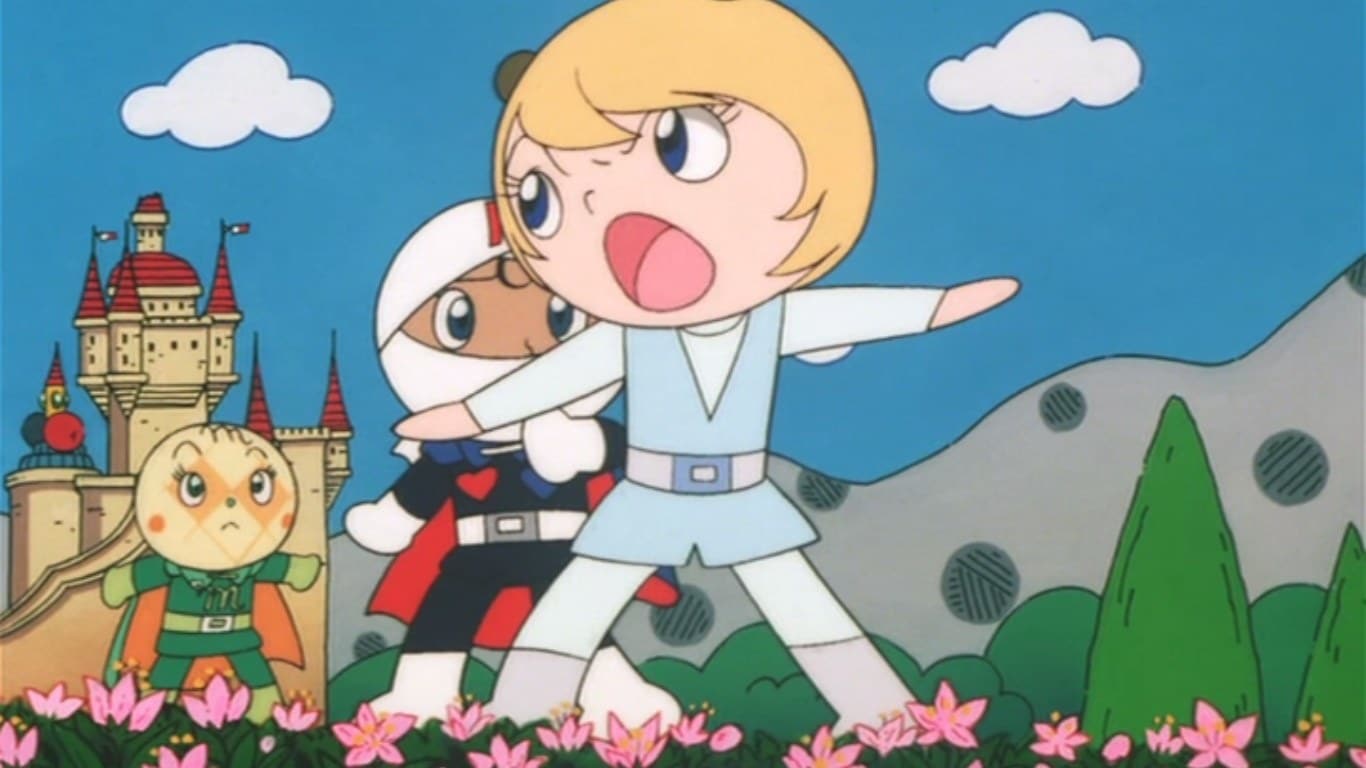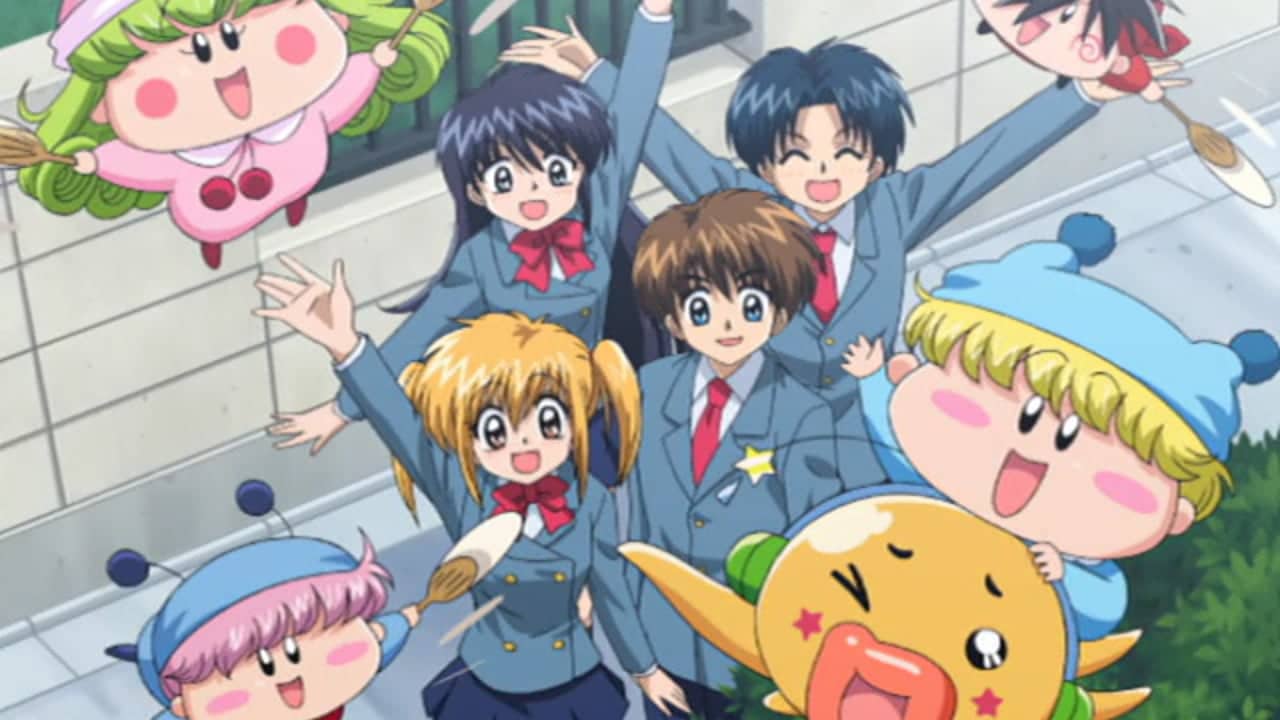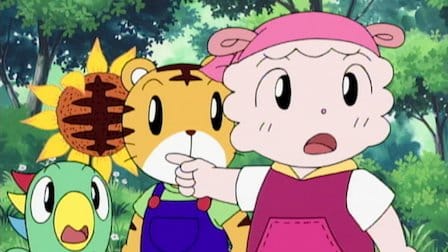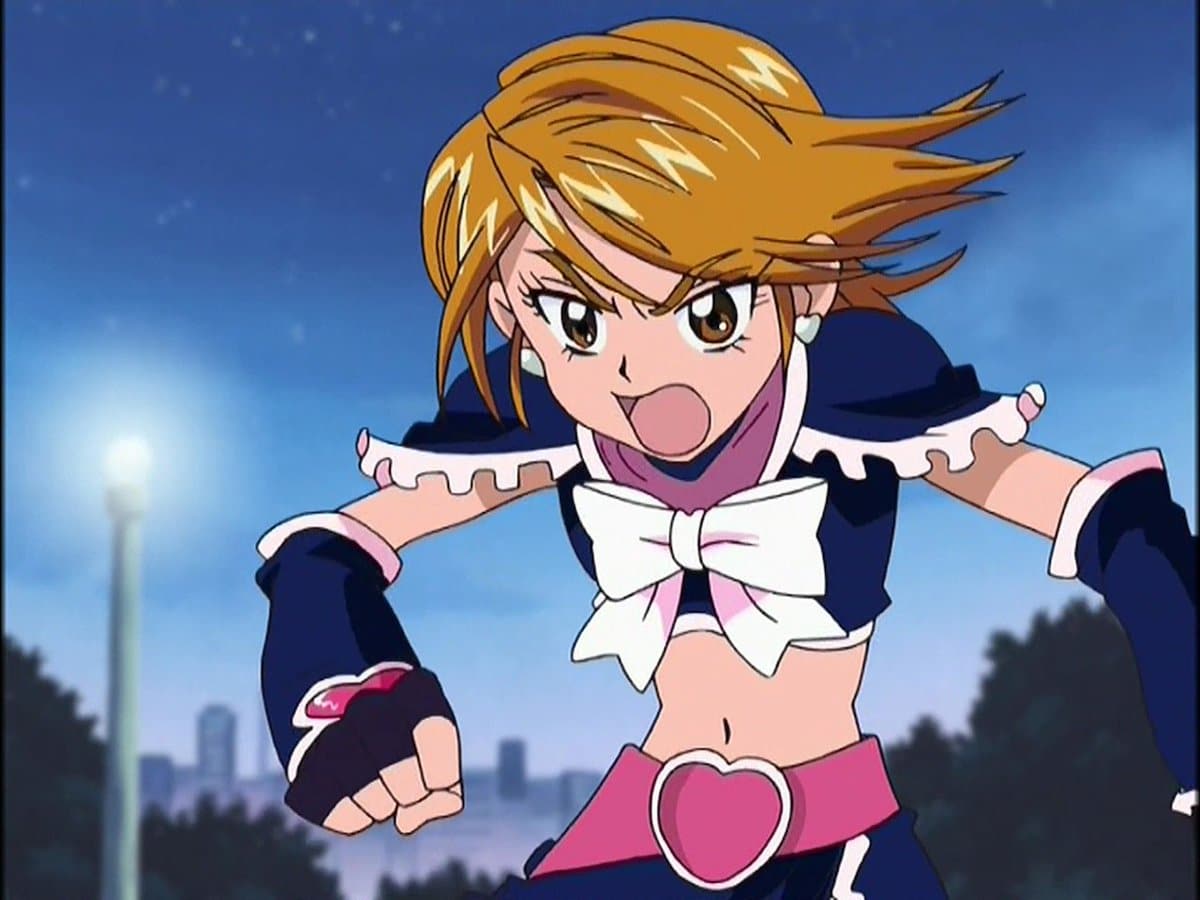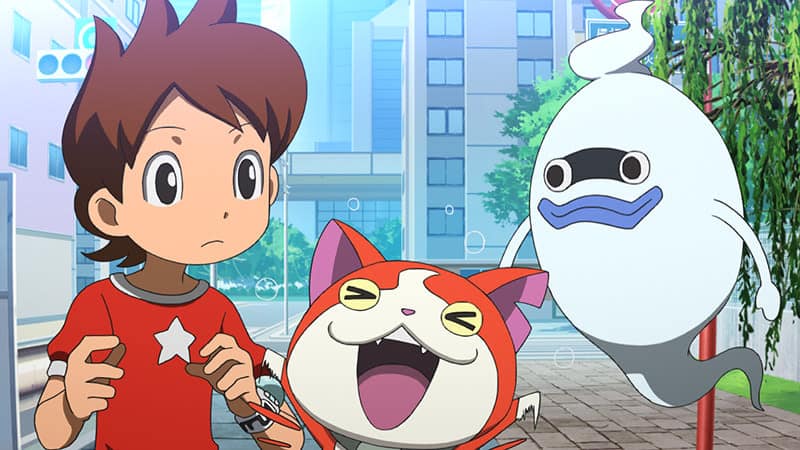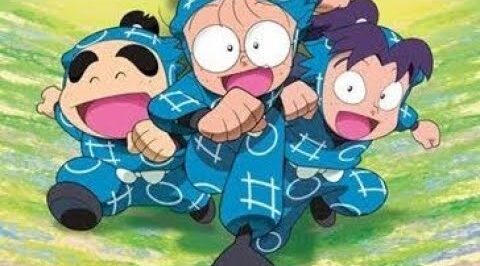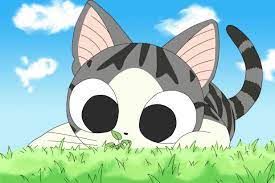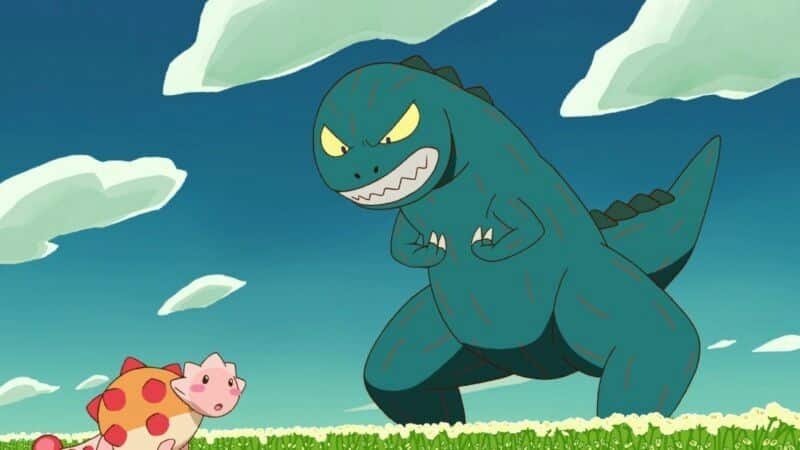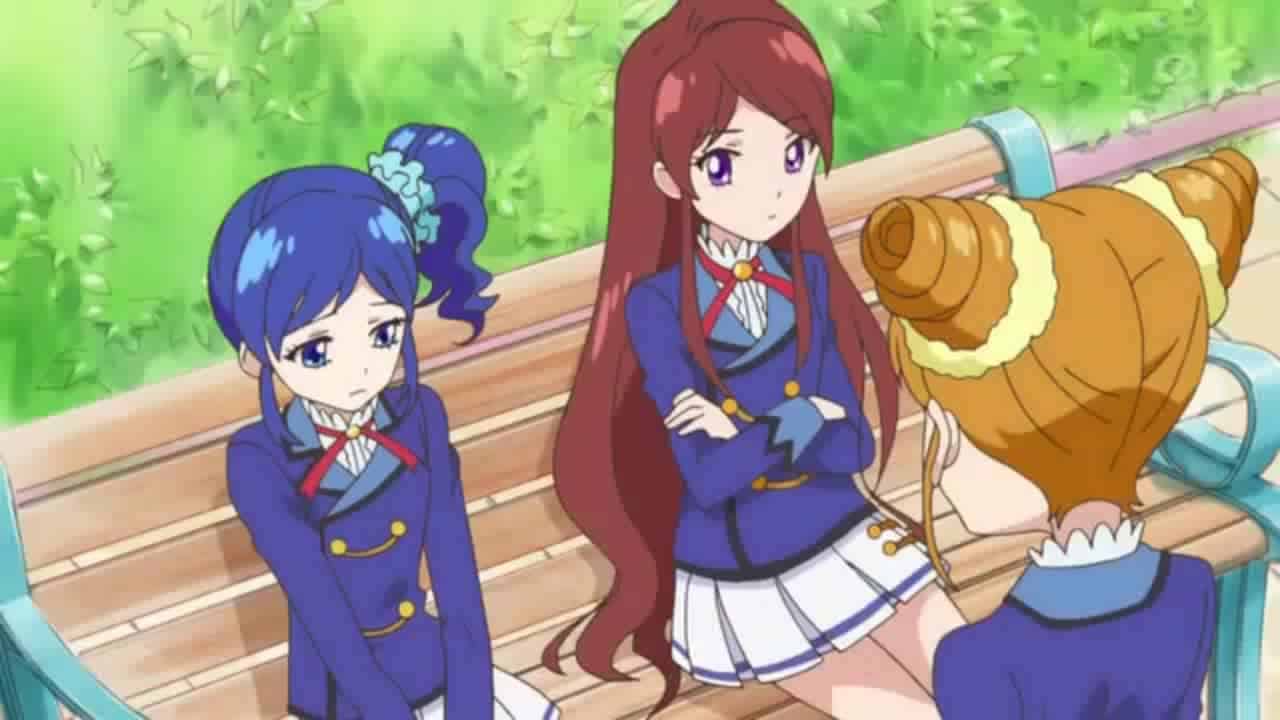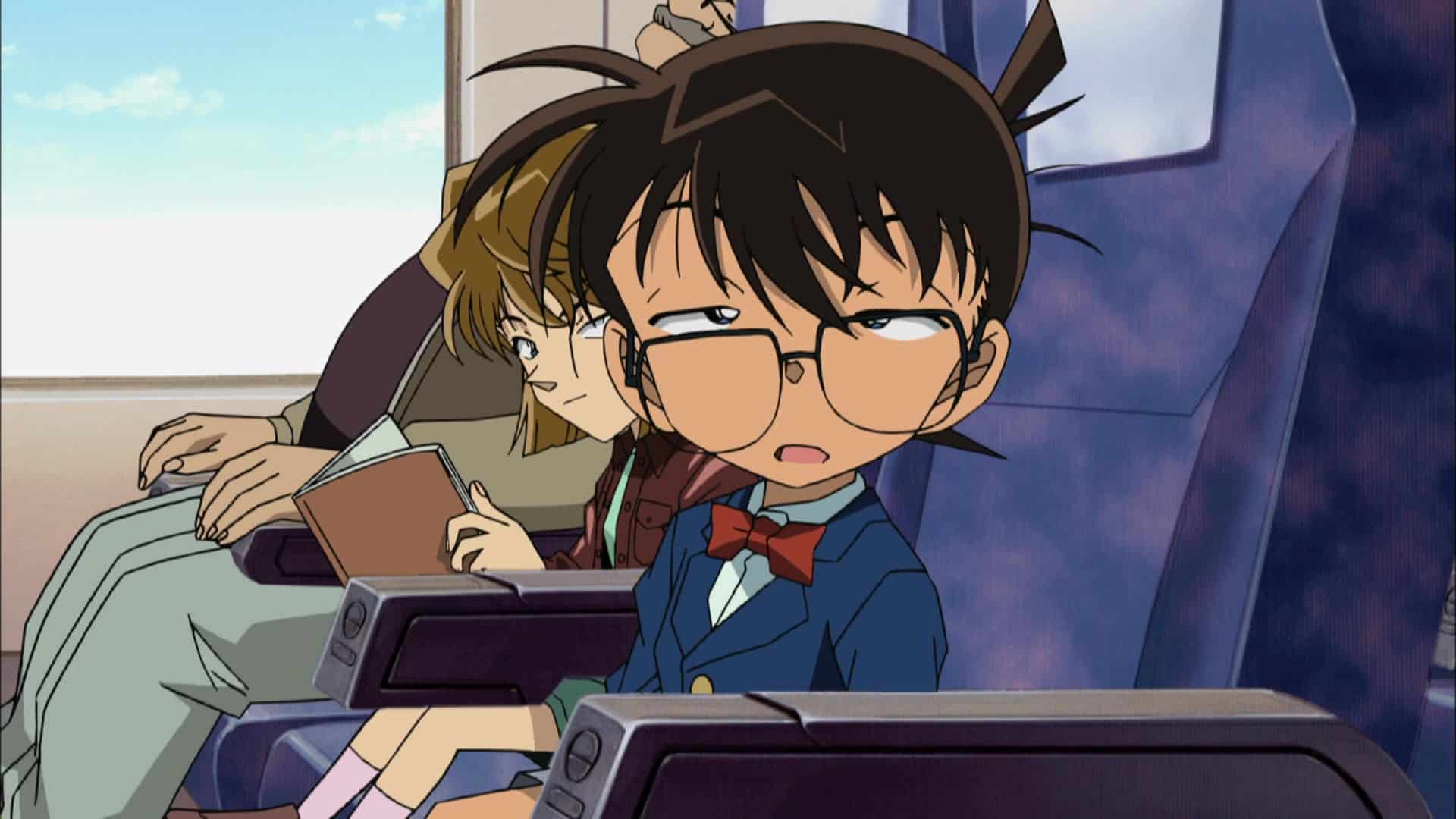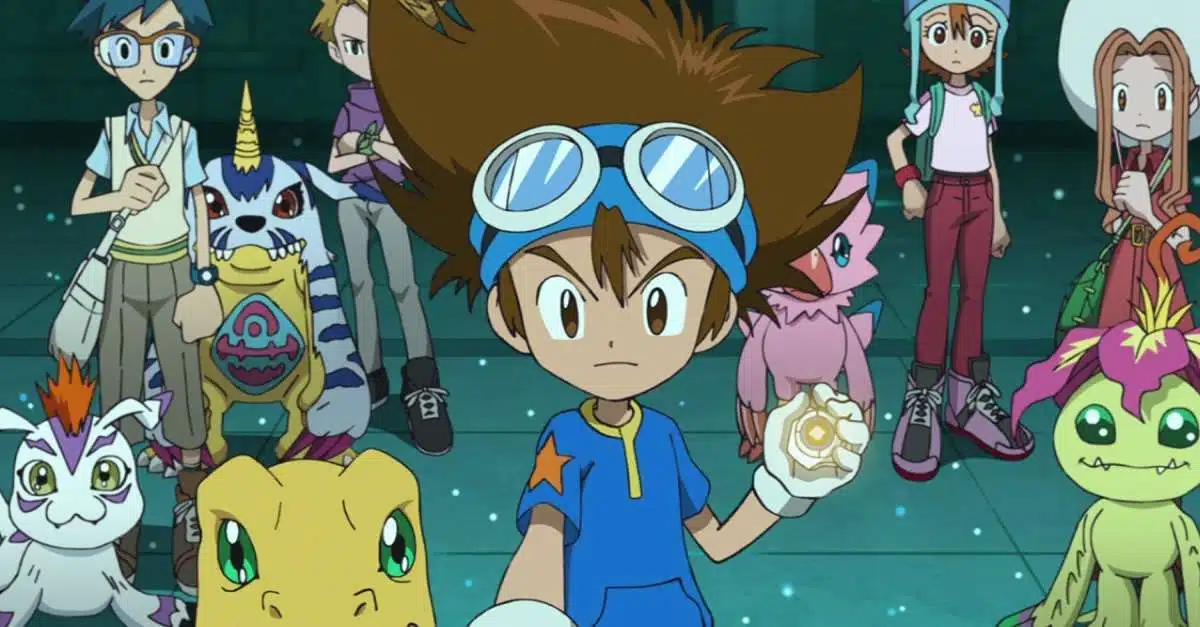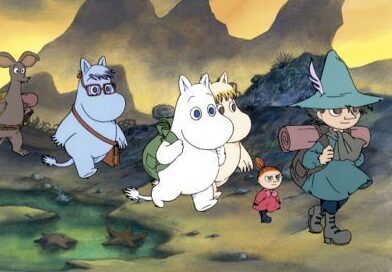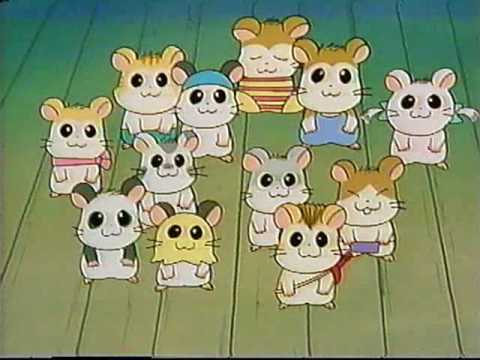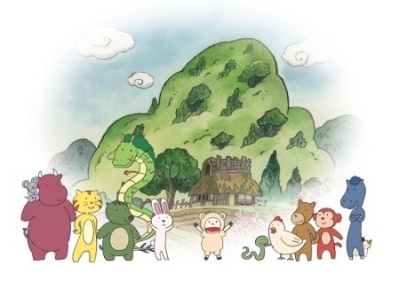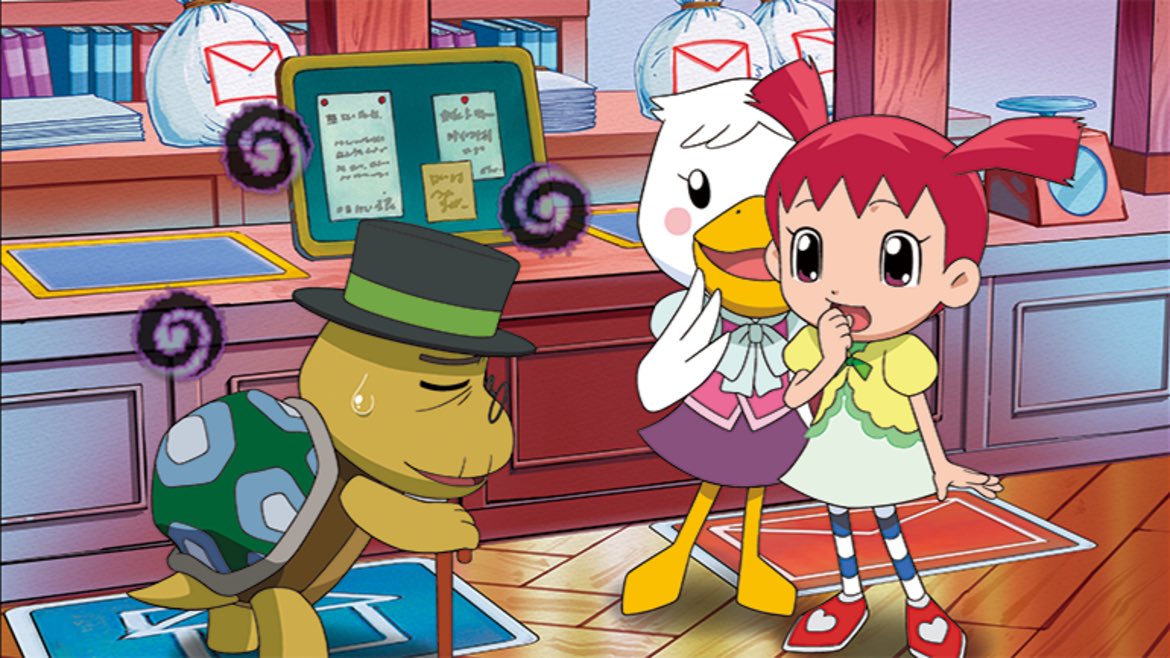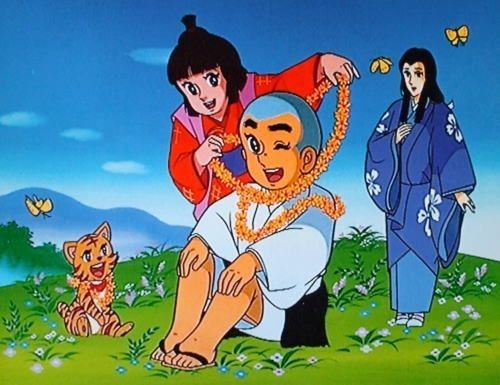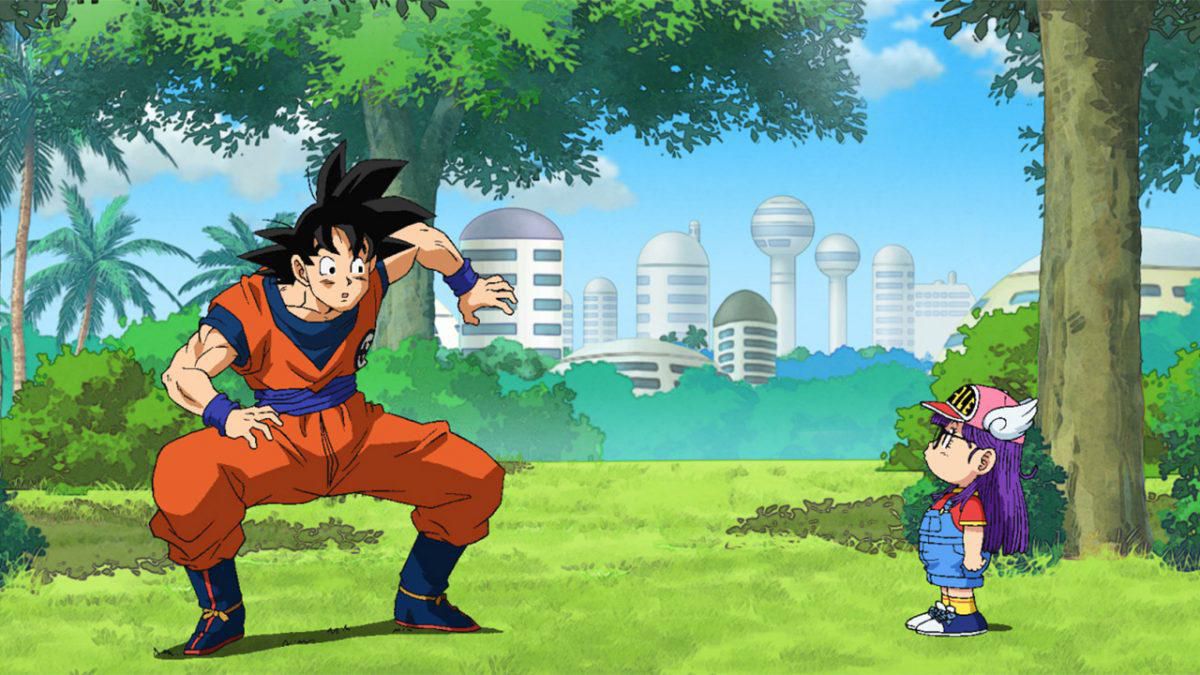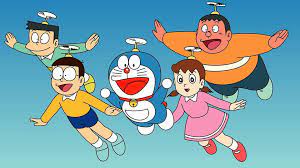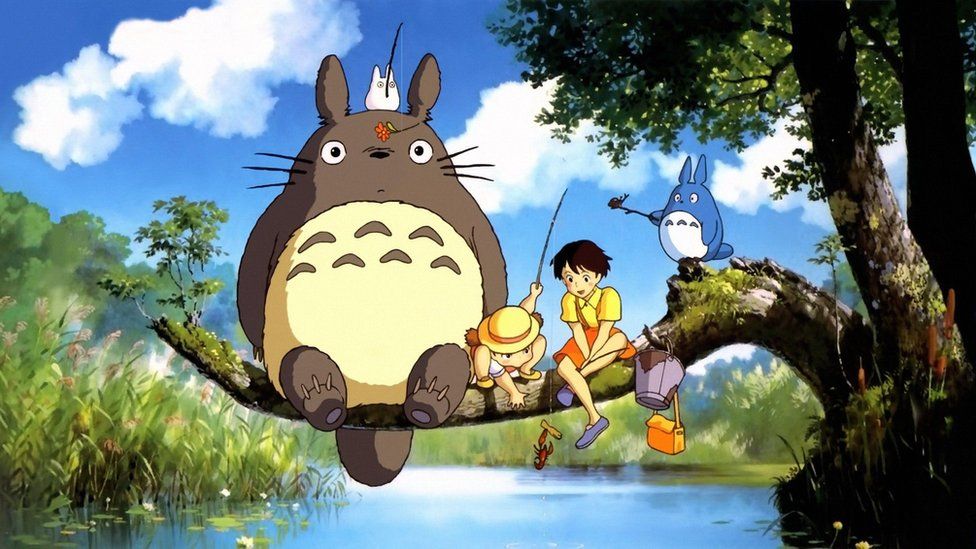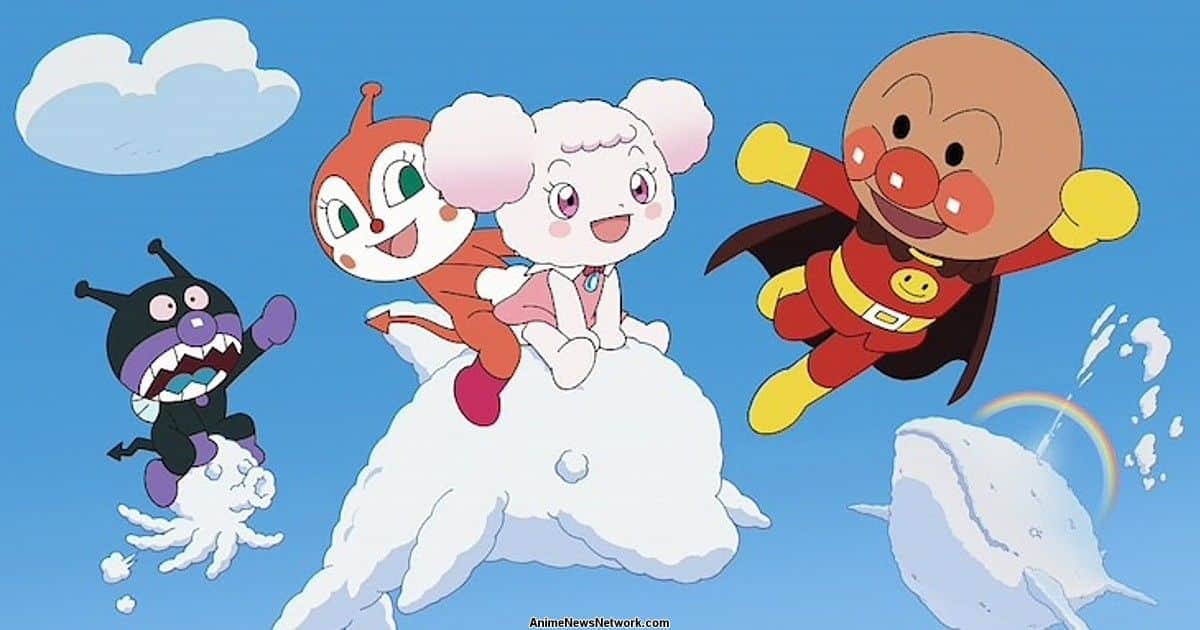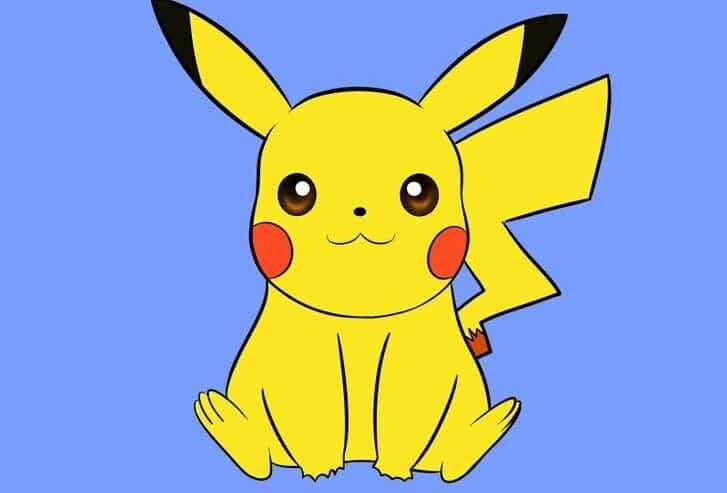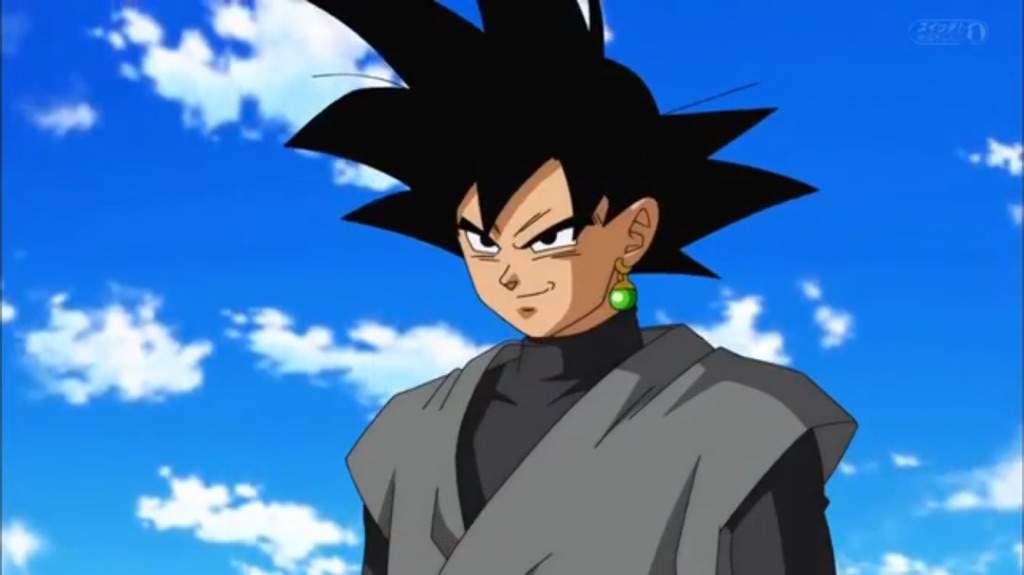Contents
- 1. サザエさん (Sazae-san)
- 2. ちびまる 子ちゃん (Chibi Maruko-chan)
- 3. クレヨンしんちゃん (Crayon Shin-chan)
- 4. ドラえもん (Doraemon)
- 5. はなかっぱ (Hana Kappa)
- 6. ゲゲゲの鬼太郎 (Gegege no Kitaro)
- 7. 鉄腕アトム (Tetsuwan Atom / Astro Boy)
- 8. それいけ!アンパンマン (Sore Ike! AnPanMan)
- 9. わがまま☆フェアリー ミルモでポン! (Wagamama☆Fairy Mirumo De Pon!)
- 10. しましまとらのしまじろう (Shima Shima Tora no Shimajiro)
- 11. ふたりはプリキュア (Futari wa Pretty Cure)
- 12. 妖怪ウォッチ (Yokai Watch)
- 13. ポケットモンスター (Pokémon)
- 14. 忍たま乱太郎 (Nintama Rantaro)
- 15. チーズスイートホーム (Chi’s Sweet Home)
- 16. おまえうまそうだな (Omae Wa Umasou)
- 17. アイカツ!アイドルカツドウ!(Aikatsu! Aidoru Katsudou!)
- 18. 名探偵コナン(Meitantei Conan / Detective Conan)
- 19. デジタルモンスター (Digimon)
- 20. 楽しいムーミン一家(Tanoshii Moomin Ikka)
- 21. とっとこハム太郎 (Tottoko Hamtaro)
- 22. ふるさと再生 日本の昔ばなし (Furusato Saisei Nihon no Mukashibanashi)
- 23. どうぶつの森 (Doubutsu no Mori)
- 24. 一休さん (Ikkyu-san)
- 25. ドクタースランプ (Dr. Slump)
- 5 Popular Japanese Cartoon Characters to Know
- How to Learn Japanese with Cartoons
- Benefits of Learning from Japanese Cartoons
25 Entertaining Japanese Cartoons for Learners

Instead of diving headfirst into Japanese dramas, why not watch adventure-filled, hilarious and easily digestible cartoons?
Let’s explore the top 25 Japanese cartoons that can help to boost your language abilities. Then, we’ll look at the potential benefits of learning from cartoons.
Download: This blog post is available as a convenient and portable PDF that you can take anywhere. Click here to get a copy. (Download)
1. サザエさん (Sazae-san)
Hiragana: さざえさん
Sazae-san is more than a kids’ show. It’s a cultural institution, a national treasure and the longest-running animated series in the world, ever!
It’s about the Isonos, a typical Japanese 大家族 (だいかぞく, big family) living together in Tokyo.
The central character is サザエ, an outspoken but somewhat clumsy woman in her early 20s, living with her husband, son, father, mother, brother and sister all under one roof.
All of the characters are colorful and funny, and all are named after fish! (サザエ is horned turban, a seafood delicacy.)
サザエさん started off as a comic strip, but is now better known as a cartoon.
2. ちびまる 子ちゃん (Chibi Maruko-chan)
Hiragana:ちびまるこちゃん
Chibi Maruko-chan まる子 is a precocious and kind-hearted 小学生 (しょうがくせい, elementary school student) who lives with her 大家族 (だいかぞく) in Shizuoka.
Each episode of Chibi Maruko-chan follows a simple plot: Maruko goes to a 銭湯 (せんとう, bathhouse) with her grandfather, Maruko’s classmate learns to ride a bike, and so on.
But Maruko’s wild imagination always makes things more dramatic—and more fun, too!
Chibi Maruko-chan is also a Japanese manga and many of its collections have been published in English.
3. クレヨンしんちゃん (Crayon Shin-chan)
Hiragana: くれよんしんちゃん
Where Sazae-san and Chibi Maruko-chan center around the 大家族 (だいかぞく), Crayon Shin-chan features a more modern 核家族 (かくかぞく), or nuclear family.
The main character is Shinnosuke, a frank kindergartner with a mischievous streak. He can’t resist the urge to pull down his pants and wiggle his butt, and he loves to point out his mom and dad’s fallacies.
Maybe that’s why Crayon Shin-chan has repeatedly earned the distinction as the show Japanese parents feel least comfortable letting their kids watch.
But while Shinnosuke’s manners may not be the best and he’s not the sharpest tool in the shed, he’s got a heart of gold and every episode of Crayon Shin-chan usually has a message it wants to send somewhere among all the butt-wiggling.
4. ドラえもん (Doraemon)
Hiragana: どらえもん
Crayon Shin-chan may be divisive, but pretty much everyone in Japan agrees that Doraemon is the king of Japanese cartoons.
Doraemon (ドラえもん) is a cat-shaped robot that’s come from the 21st century to help his owner’s great-great-great-great-grandfather, Nobita Nobi.
Nobita is a lazy elementary school student who gets bad grades, always gets yelled at at home and can’t stick up for himself on the playground.
But ドラえもん has a 四次元ポケット (よじげんぽけっと). That’s a crazy, fourth-dimensional pocket, from which he can produce all kinds of cool items to help Nobita in his times of need.
Like many of the cartoons I’ve discussed here, Doraemon is also a manga, and its most famous stories are known by almost all Japanese people.
Try asking your language exchange partner which ひみつ道具 (ひみつどうぐ, secret tool) they’d like to have from the 四次元ポケット (よじげんぽけっと)!
5. はなかっぱ (Hana Kappa)
Do you know what a かっぱ (kappa) is?
It’s a creature of Japanese folklore that’s said to lurk in rivers and streams. Japanese cautionary tales and superstitions like this are always fun to learn about.
In the olden days, Japanese parents told their children かっぱ stories to warn them not to play in the water. The traditional image of the かっぱ is of a slimy, scaly creature with a weird beak for a mouth.
These days, the かっぱ has taken on a cuter, more cuddly image—such as Hana Kappa, a かっぱ with a flower on his head!
How adorable is that?
Hana Kappa’s flower keeps changing depending on his mood or whatever fix he’s in. This frustrates him because he wants to have the same flower all the time, like his friends.
Meanwhile, he has to thwart the evil yet incompetent Garizou, who wants to steal Hana Kappa’s flower for his master.
At only 10 minutes per episode, Hana Kappa is a manageable watch, and is one of the more unique and interesting Japanese cartoons for its mix of Japanese traditional storytelling and contemporary plotlines.
6. ゲゲゲの鬼太郎 (Gegege no Kitaro)
Hiragana: げげげのきたろう
First premiering in 1968, Gegege no Kitaro was the reason Japan revived its interest in its yokai (妖怪, ようかい)—the monsters of Japanese folklore.
Numerous adaptations of this story have been made over the decades, with the most recent one being in 2018.
This story revolves around a boy named Kitaro, a half-human, half-妖怪 who straddles the road between the two worlds.
He lives in a graveyard as the last member of the Ghost Tribe with his father, who has been reduced to a sentient eyeball. When the careless actions of humans enrage the 妖怪 or when a dangerous 妖怪 crops up, it’s up to Kitaro to save the day and make peace between both species.
Combining elements of traditional Japanese folklore with the simplistic language of a kids’ cartoon, this classic appeals to all ages.
7. 鉄腕アトム (Tetsuwan Atom / Astro Boy)
Hiragana: てつわんあとむ
This series by the “god of manga” Osamu Tezuka spawned anime as we know it today.
Seeing as it premiered in 1963, I’ll bet some of you have parents or grandparents that watched this series when they were children.
In the year 2003, humans and robots live together in a futuristic society. When his son Tobio dies in a car accident, the devastated Professor Tenma creates a robot whom he names Atom in an effort to bring him back to life.
When Atom fails to live up to Tenma’s expectations, he sells Atom to a circus, where he’s then rescued by Professor Ochanomizu. The professor adopts him as a son, and his kindness inspires Atom to fight against evil.
Each episode of Tetsuwan Atom features Atom fighting against different robots and aliens to save the day. Try watching it with your mom or dad (or your grandparents!) for a fun trip down memory lane.
8. それいけ!アンパンマン (Sore Ike! AnPanMan)
Hiragana: それいけ!あんぱんまん
One of the most popular kids’ cartoon figures in Japan, the titular AnPanMan can be found on everything from postcards to clothes, and of course, the snack he was based on: anpan (あんパン), a sweet bun with red bean filling.
When a magic star falls into a bakery one night, an あんパン comes to life as the superhero Anpanman.
Anpanman fights against the evil sentient germ named Baikinman. He lives with Uncle Jam, a baker who replaces his head when it gets damaged.
Anpanman also goes on patrols around Uncle Jam’s home, helping those around him with everyday troubles and even giving parts of his head to those who are hungry—part of the reason Uncle Jam keeps needing to repair it!
9. わがまま☆フェアリー ミルモでポン! (Wagamama☆Fairy Mirumo De Pon!)
Hiragana: わがまま☆ふぇありー みるもでぽん!
Winning awards for children’s manga in 2003 and 2004, this anime is a heartwarming story about love and magic.
Kaede is a sweet eighth-grade girl who gets crazy shy around her crush, Setsu.
One day after school, she buys a mug that contains a note, stating that by pouring cocoa into this mug and making a wish, a love fairy will appear to make that wish come true. Deciding to follow its directions, she wishes for Setsu to return her affections.
As promised, a little love fairy named Mirumo appears before her… however, Mirumo would much rather get into trouble than do anything to help Kaede!
Mirumo is a fairy called a muglox, and he happens to be their prince.
Though his parents have arranged for him to marry Princess Rirumu, he has no interest in her. But Rirumu won’t give up without a fight, and so she attaches herself to Setsu to get close to Mirumo.
10. しましまとらのしまじろう (Shima Shima Tora no Shimajiro)
Being targeted for a preschool audience, the Japanese in Shima Shima Tora no Shimajiro is very easy to understand. For those who are just starting to learn Japanese, this show is a fantastic study tool.
This cartoon is about a preschooler tiger named Shimajiro who lives on Challenge Island with his parents and little sister. He attends kindergarten with his friends and has all sorts of adventures with them. This show covers life lessons like having good manners, making friends, sharing and so on.
Not only will you learn about the Japanese language with this cartoon, but also the basics of Japanese society and manners that Japanese children are expected to learn.
11. ふたりはプリキュア (Futari wa Pretty Cure)
Hiragana: ふたりはぷりきゅあ
Starting with this first adaptation airing in 2004, Pretty Cure has become a magical girl franchise that has spawned numerous universes and spin-off stories that have charmed little girls all over Japan.
The active Nagisa, star of the lacrosse team, and the book smart Honoka are chosen by the magical creatures Mipple and Mepple to save the Realm of Light. To do this, the two must gather the mystical Prism Stones.
This show revolves around the lives of Nagisa and Honoka, including school, family and personal drama that bring with it some truly touching moments.
There’s also more hand-to-hand combat compared to the flashy magic powers in other girl shows, making it great for action fans.
12. 妖怪ウォッチ (Yokai Watch)
Hiragana: ようかいうぉっち
Based on a video game series of the same name, this newer addition to the kids’ cartoon scene offers a fun look at Japanese monsters while dealing with a boy’s journey through adolescence.
When elementary schooler Keita Amano stumbles across an ancient shrine, he frees a spirit named Whisper who becomes his guide.
He has to hunt down 妖怪 that cause mischief around the neighborhood and befriend them in order to make things calm down.
Yokai Watch is an episodic anime that features a new 妖怪 each episode and plenty of running gags, making it more of a slice-of-life comedy than an action show. The animation and dances of the characters are pretty fun, making it a visual feast.
13. ポケットモンスター (Pokémon)
Hiragana: ぽけっともんすたー
Like me, I bet many of you grew up playing the games and watching the Pokémon anime.
If you’re the nostalgic type who wants to take another look at a childhood classic, try watching this show in its original language—all in the name of learning Japanese!
Satoshi (AKA Ash) goes on adventures with his Pokémon to become a Pokémon master. To do this, he must use the Pokémon he catches to defeat eight gym leaders and conquer the Elite Four, the strongest trainers in the land.
Along the way, he has to face off against new rivals, strong gym leaders, and of course, the nefarious yet incompetent Team Rocket.
This series has gone on for over 20 years and features Satoshi’s adventures into far-off lands, with new friends to meet and brand new Pokémon to catch.
14. 忍たま乱太郎 (Nintama Rantaro)
Hiragana: にんたまらんたろう
For a fun romp through Japan’s middle ages, try Nintama Rantaro, a show about three kids attending a ninja academy!
Rantaro, Shinbei and Kirimaru are young children enrolled at a ninja school and are part of the first year nintama (ninja egg) class, which refers to their novice status.
Though they’re supposed to be training to become ninjas, they can’t help but get into mischief! With plenty of slapstick humor, this Japanese kids’ cartoon will leave you charmed by these rowdy little ninjas.
Nintama Rantaro’s format consists of two stories in one 30 minute episode.
Having run since 1993, it’s the longest-running program on NHK (Japan’s top broadcasting network)!
15. チーズスイートホーム (Chi’s Sweet Home)
Hiragana: ちーずすいーとほーむ
Warning: this show is incredibly cute!
A young kitten who was abandoned by her previous family gets discovered by a boy named Yohei and his parents. Although pets aren’t allowed in the apartment, they decide to keep her anyway and have all kinds of adventures with their brand new kitten, who they name Chi.
Each episode runs for three minutes and puts a strong emphasis on family and the experience of caring for a pet.
From playing in cardboard boxes to encountering strange dogs to getting soaked in the rain, every story features Chi’s hilarious and realistic kitty antics.
16. おまえうまそうだな (Omae Wa Umasou)
This film about a family in the age of dinosaurs starts with a female maiasaura discovering an abandoned egg.
She decides to care for it, even after the egg hatches into a T-Rex, much to the shock of her herbivorous pack. Determined to raise the T-Rex, she names him Heart and raises him along with her other child, Light.
Later, when Heart grows up and leaves home, he finds an abandoned egg that hatches into an herbivorous dinosaur, who mistakes him for its daddy. Heart can’t bring himself to eat it, so he does his best to raise the baby dino.
With issues including the struggles of parenthood and the age-old question of nature vs. nurture, though this film may be for children, even adults might shed a tear.
The Land Before Time, anyone?
17. アイカツ!アイドルカツドウ!(Aikatsu! Aidoru Katsudou!)
Hiragana: あいかつ!あいどるかつどう!
For those who don’t know, idols are young women who are trained as performers with unique personalities in order to develop a strong fan following.
Aikatsu! Aidoru Katsudou! takes the image of idols and incorporates them into a fun school adventure.
Middle schooler Ichigo Hoshimiya aims to enroll in Starlight Academy, the nation’s premier idol training school.
After she and her best friend Aoi are moved by the performance of top idol Mizuki Kanzaki, the two girls set their sights on touching the hearts of the masses, just like Mizuki.
Not only do they learn about singing and dancing, but they also learn what it means to be an idol in their hearts. Each of the characters is charming in her own unique way, and you can’t help but root for them.
18. 名探偵コナン(Meitantei Conan / Detective Conan)
Hiragana: めいたんていこなん
A long-running classic with 24 movies and over 1,000 episodes, Detective Conan (known as Case Closed in the US) is a huge favorite in Japan.
High schooler Shinichi Kudo is a genius detective who, after witnessing an exchange he shouldn’t have, is force-fed a drug that turns him into a child.
Disguising his identity as Conan Edogawa, he moves in with his childhood friend Ran and her detective father. He continues to solve cases while looking for a way to get his original body back.
Detective Conan’s engaging twists and turns are perfect for any mystery fanatic. The large cast of characters, from fellow detectives to children at the elementary school Shinichi is forced to attend, makes for endless entertaining stories.
19. デジタルモンスター (Digimon)
Hiragana: でじたるもんすたー
Here’s another show that I’m sure a few of you recall from your childhoods.
When seven children go to a summer camp, they’re whisked into a digital world and meet little creatures called Digimon. They learn that they’re the chosen ones called the DigiDestined, fated to save the digital world through the power of friendship and leveling up their Digimon.
Compared to Pokémon, Digimon deals with more significant character growth and real-world issues, such as broken families and death, but still keeps kids’ themes intact.
Each member of the DigiDestined has their own personal journeys, discovering who they are as they grow up together with their Digimon.
20. 楽しいムーミン一家(Tanoshii Moomin Ikka)
Hiragana: たのしいむーみんいっか
Originally inspired by a Finnish comic and book series, Tanoshii Moomin Ikka will entertain and calm you when you simply want to experience the joys of childhood.
This show follows the Moomin family, who are little hippo-like trolls, as they go about their lives in a sweet fantasy world. There’s no real plot, just fun adventures found in the forest and magical objects they encounter.
Tanoshii Moomin Ikka was a smash hit in Japan, keeping audiences engaged as it follows the Moomins through three years, showing the passing of seasons with new things to enjoy in each one.
21. とっとこハム太郎 (Tottoko Hamtaro)
Hiragana: とっとこはむたろう
Cute hamsters? Check.
Silly adventures? Check.
Heartwarming messages? Check!
Tottoko Hamtaro revolves around Hamtaro, the pet hamster of a fifth-grade girl named Hiroko Haruna, and his adventures with the neighborhood hamsters.
The hamster group, dubbed Ham-Hams, each have personalities resembling their owners, making for hilarious antics between them as they get into mischief, deal with misunderstandings and even solving their owners’ problems.
Messages of kindness and friendship are wrapped in a cute fuzzy bow, making for a delightful experience as you watch Hamtaro and join him on his adventures.
22. ふるさと再生 日本の昔ばなし (Furusato Saisei Nihon no Mukashibanashi)
Hiragana: ふるさとさいせいにほんのむかしばなし
Folktales are a classic way of spreading culture and life lessons to children, and for a look at the traditional tales of Japan, this show is perfect.
Not only is the vocabulary accessible for children, but you’ll also be exposed to Japanese fairy tales both familiar and unknown.
Each episode contains three stories from Japanese tradition, including ones like Momotaro, Kaguya-hime, Omusubi Kororin, Urashima Taro and more. Each tale is narrated by professional voice actors who breathe life into every character, like a master storyteller.
The morals and lessons behind each story not only reflect Japan’s cultural mindset, but also hold messages that can be understood and applied to life, regardless of where you’re from.
23. どうぶつの森 (Doubutsu no Mori)
Hiragana: どうぶつのもり
Doubutsu no Mori, also known as Animal Crossing, is a beloved video game franchise.
But did you know that it was made into a movie?
In Doubutsu no Mori, an 11-year-old girl named Aya moves to a forest where the inhabitants are all talking animals. She gets a job working for Tom Nook, which brings her into contact with her new neighbors. Before long, she befriends them.
Shortly after her arrival, she begins to find bottles washed up on the beach, containing messages that promise something amazing will occur during the winter festival if pine trees are planted at certain points in the village.
Aya decides to undertake the challenge together with her new friends.
24. 一休さん (Ikkyu-san)
Hiragana: いっきゅうさん
An oldie but a goodie, this cartoon was beloved by children throughout Asia in the 1970s and 1980s. Favoring brains above brawn, this show teaches children to think through their problems.
This comedy stars Ikkyu, a monk in training who has a bit of a mischievous streak, much to the ire of his instructors.
However, he’s an extremely helpful little boy who uses his brains to solve the problems of the people in the village. When he’s trying to come up with an answer to a tough problem, he assumes his trademark thinking pose: sitting cross-legged with his two index fingers on his head.
Fun fact: Ikkyu was actually a real person!
Ikkyu was a Zen Buddhist monk who resided in Kyoto during the 1400s. His early life at Ankoku-ji temple was used as an inspiration for this cartoon.
25. ドクタースランプ (Dr. Slump)
Hiragana: どくたーすらんぷ
I’m sure most of you have heard of Dragon Ball.
But did you know that it was the second great work of creator Akira Toriyama?
His first creation, Dr. Slump, is a lighthearted show with lots of puns and slapstick humor.
Dr. Slump is set in Penguin Village, where the genius inventor Senbei Norimaki has just completed his ultimate creation: a robot girl named Arale.
She turns out to be quite the curious handful, leading to all kinds of wacky adventures in the village and its residents. Senbei’s bizarre inventions cause their fair share of trouble as well!
This comedy series is beloved in Japan, and contains countless parodies of both Japanese and American culture. Many Dr. Slump characters appear in the Dragon Ball franchise as well, so you may recognize a few faces!
5 Popular Japanese Cartoon Characters to Know
Cartoon characters are everywhere in Japan, and they’re as much a part of Japanese culture as kimono or green tea.
The shows they star in draw audiences of all ages, and they can also be found on food products, stationery and even ad campaigns.
These five cartoon characters consistently rank as favorites among Japanese people.
Doraemon
This little blue earless cat is beloved throughout not only Japan, but all of Asia.
His magical pocket filled with crazy inventions as well as his helpful spirit has made him a favorite for many Japanese children. Doraemon was even named Japan’s official “anime ambassador!”
Totoro
Studio Ghibli’s mascot and star of the film My Neighbor Totoro, Totoro enjoys widespread popularity as a cute, fluffy giant. His distinctive shape and adorable features have charmed the hearts of many, making him an icon of Japanese pop culture.
Anpanman
Even if you’ve never heard of him, Anpanman is one of the most popular Japanese kids’ cartoon characters of all time. His franchise is immense in Japan, spanning books, games and more. Look for his face stamped on あんパン—the red bean bun that serves as his namesake!
Pikachu
The mascot of the Pokémon franchise is adored around the world, and its native Japan is no exception. Pikachu is beloved by those of all ages, with merchandise, cafes and even parades dedicated to this little yellow mouse!
Son Goku
Dragon Ball is a global phenomenon, so many people think of Goku when Japanese cartoons are mentioned.
His courageous spirit and dedication to constantly improving himself are inspiring. Plus, he’s got some pretty awesome moves!
How to Learn Japanese with Cartoons
Like Japanese movies and TV shows, there is an absolutely huge number of Japanese cartoons that you can watch. They can also be pretty addictive (and great for stress relief)!
Here’s how I personally study with Japanese cartoons:
Practice with subtitles.
Start by watching an entire clip or episode with subtitles.
If you’re more advanced, try to only look at the subtitles when you don’t recognize a word.
Subtitles are helpful as a study tool because you’ll know exactly what to look for in a dictionary instead of trying to guess based on the sound.
You can even use Japanese subtitles only, which has the added effect of getting you more comfortable with reading in Japanese.
Here’s an example of learning with subtitles, courtesy of our YouTube team.
Save new grammar and vocabulary.
Japanese cartoons tend to use basic language that’s common in everyday life. When an unfamiliar word comes up several times, it’s probably worth jotting it down.
To improve your retention, you can pause the video and come up with your own example sentences using the word.
The same goes for sentence structure. Have you ever had those confusing moments when you know all of the words in a Japanese sentence but it takes a while to figure out what the sentence means?
If that happens while watching, try breaking down the sentence so it’s clear to you and then applying the same structure yourself.
Test your listening comprehension.
Once you’ve gone through an entire episode, replay it but keep the subtitles off.
This tests both your listening comprehension and vocabulary at once. Since you’ve already studied the entire episode, it’s pretty much a review of the new words and grammar structures you’ve just learned!
If a specific section sounds too fast, you can keep repeating it until your brain gets used to the sounds and it clicks for you.
One way to help you out with this is the language learning platform FluentU.
It naturally and gradually eases you into learning Japanese language and culture. You’ll learn real Japanese as it’s spoken in real life.
Just take a look at the wide variety of authentic video content available in the program. Here’s a small sample:

You’ll discover tons of new Japanese vocabulary through these great clips.
Don’t worry about your skill level being an issue when it comes to understanding the language. FluentU makes native Japanese videos approachable through interactive transcripts.
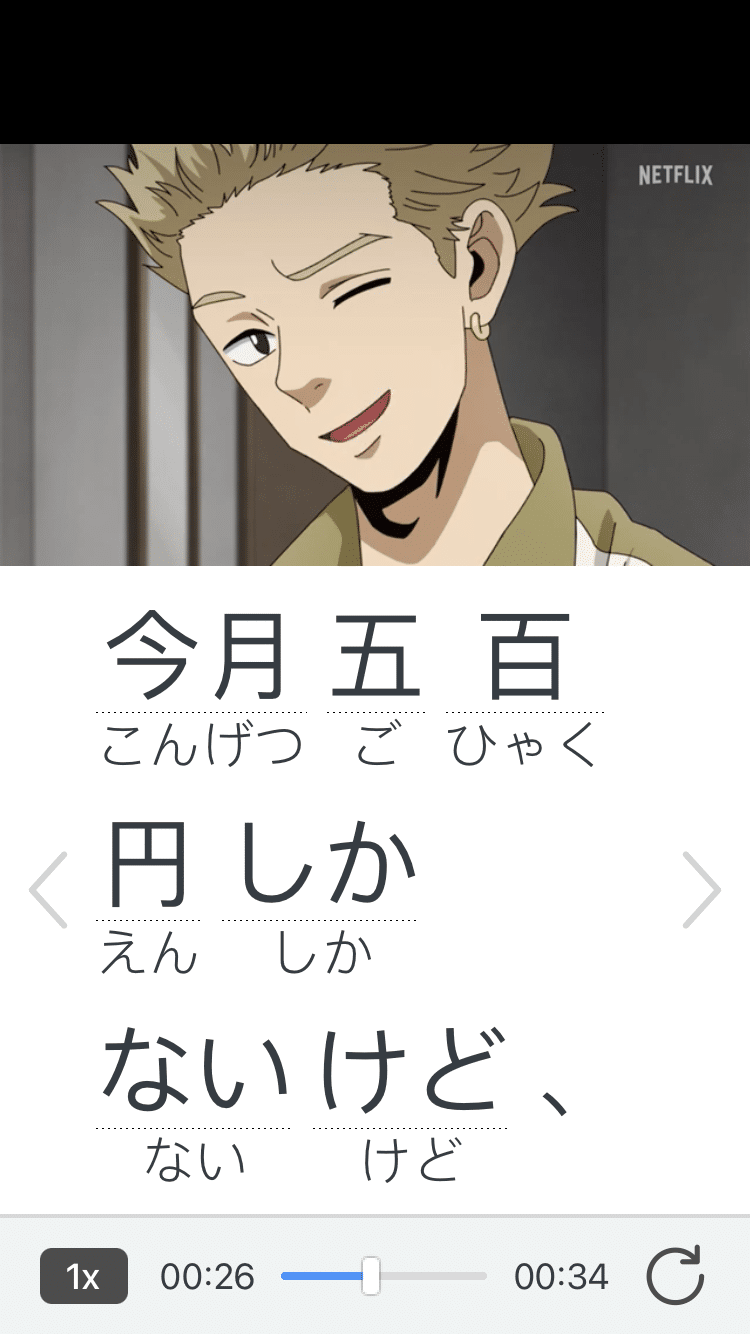
Tap on any word to look it up instantly.
You’ll see definitions, in-context usage examples and helpful illustrations. Simply tap “add” to send interesting vocabulary words to your personal vocab list for later review.

FluentU even uses a learning program which adapts to your specific needs to turn every video into a language learning lesson and get you to actively practice your newly-learned language skills.
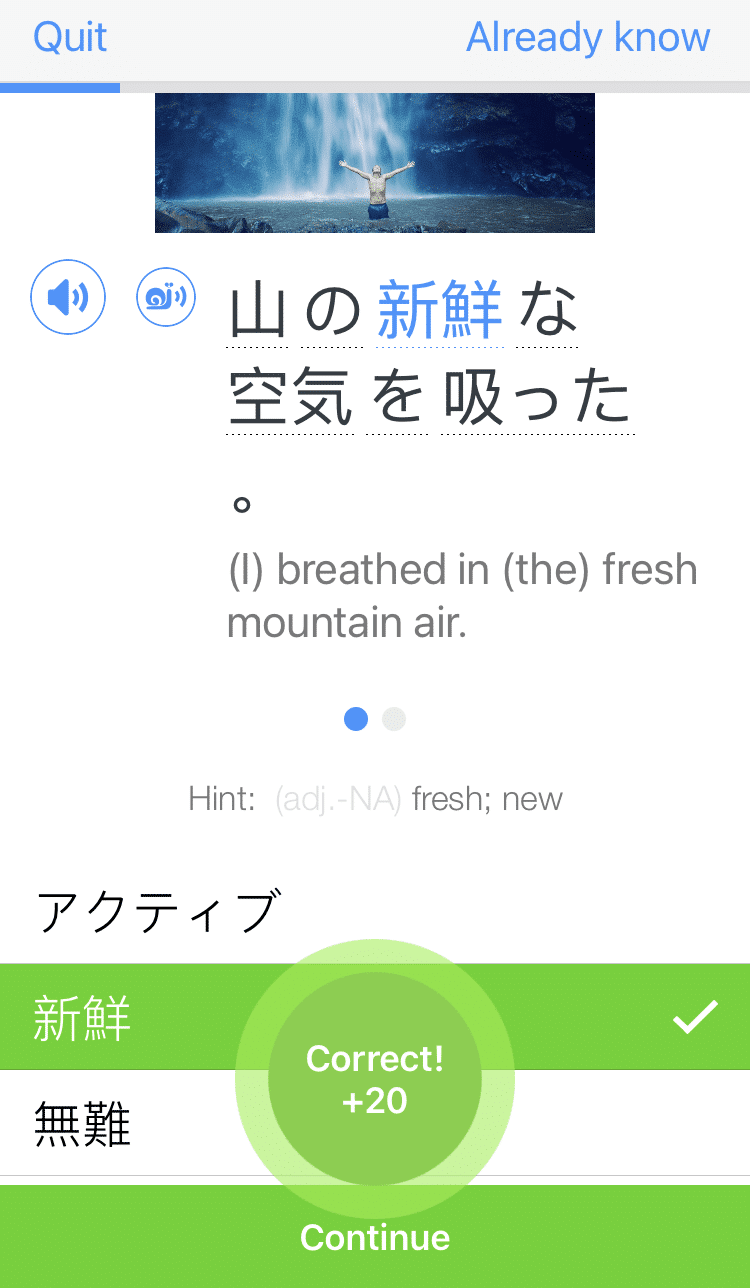
Start using the FluentU website on your computer or tablet or, better yet, download the FluentU app from the iTunes or Google Play store. Click here to take advantage of our current sale! (Expires at the end of this month.)
Benefits of Learning from Japanese Cartoons
Learn the Japanese language and culture like a child would.
What are kids like when they learn about the world around them, or tackle a new subject in school for the first time?
They’re often described as little sponges, naturally absorbing all of their new experiences and surroundings.
It doesn’t just stop there—children are also inquisitive.
They ask lots of questions.
And if they encounter something that they haven’t before—a new word, phrase, action or concept—they try it out without fear of failure. That’s why kids are notorious for saying the darndest things.
Doesn’t this sound like a great approach to take when learning a new language?
There’s no doubt that constantly speaking Japanese is one of the best ways to boost your conversational Japanese skills. For the Japanese learner—especially the high-beginner to lower-intermediate—watching Japanese cartoons helps bring out the curious child in you.
Kids’ cartoons—even the sillier or more action-oriented ones—are meant to be educational to some degree.
Because they’re aimed at children, they introduce and reinforce important cultural aspects that adult dramas take for granted.
Japanese cartoons will sometimes devote entire episodes to things like holidays, events or seasonal activities, so you can immerse yourself and achieve a greater understanding of the culture than you might otherwise via an anime or Japanese drama.
Japanese cartoons are easy to follow.
Some have fantastical stories that go all over the place (especially when stretched out over a year-long series), but even then, the basic plotlines are still fairly simple and take place in familiar, everyday settings, like schools and homes.
That means you’ll become familiar with all the everyday phrases you need to speak Japanese properly.
Beginners—or those who have difficulty with listening comprehension—will also be happy to know that Japanese cartoons use simpler language than of dramas and anime.
The characters speak slower and the dialogue is typically standard, casual Japanese, without the idiomatic phrases or regional dialects that can make anime hard to understand.
Immersion in Japanese is an effective learning technique.
In a nutshell, language immersion consists of surrounding yourself in whatever language you want to learn.
This is done through reading, writing, listening, speaking and thinking in that language. The more you surround yourself in a foreign language, the faster you’ll learn it.
For those learning Japanese, cartoons are great immersion material because not only are they easy to understand, but they also contain repeated speech patterns and allow you to hear terms in their native contexts by native Japanese speakers.
Kids’ shows employ simpler, more limited sets of vocabulary, so if you don’t know a specific word the first time you hear it, you’re nearly guaranteed to hear that word again.
And after the second or third time, the meaning may become clear from the context alone.
While studying is important for learning how Japanese is constructed, immersion is where real learning takes place. Immersion requires using authentic materials, and Japanese kids’ cartoons fit the bill.
More than anything, Japanese cartoons are just plain fun!
Japan’s kid-oriented programming is world-famous for its creativity and humor. In fact, cartoons aren’t only for kids in Japan.
Adults love them, too!
Long-running shows like Sazae-san and Doraemon are so popular that they consistently hit the Top 10 in Japanese TV ratings week after week.
Doraemon has also spawned several spin-off movies that have made millions of dollars over the years, and even an American remake on the Disney XD channel!
While watching Japanese cartoons, your confidence can build because you’ll be better able to watch the show at the same level as your Japanese friends.
Download: This blog post is available as a convenient and portable PDF that you can take anywhere. Click here to get a copy. (Download)
